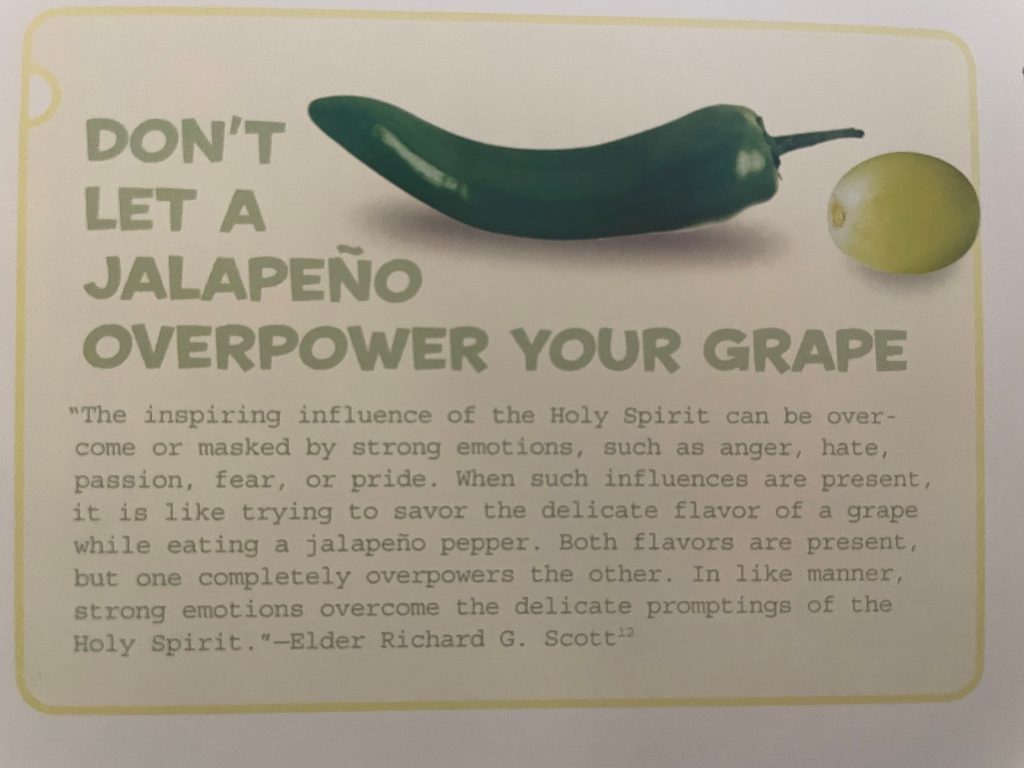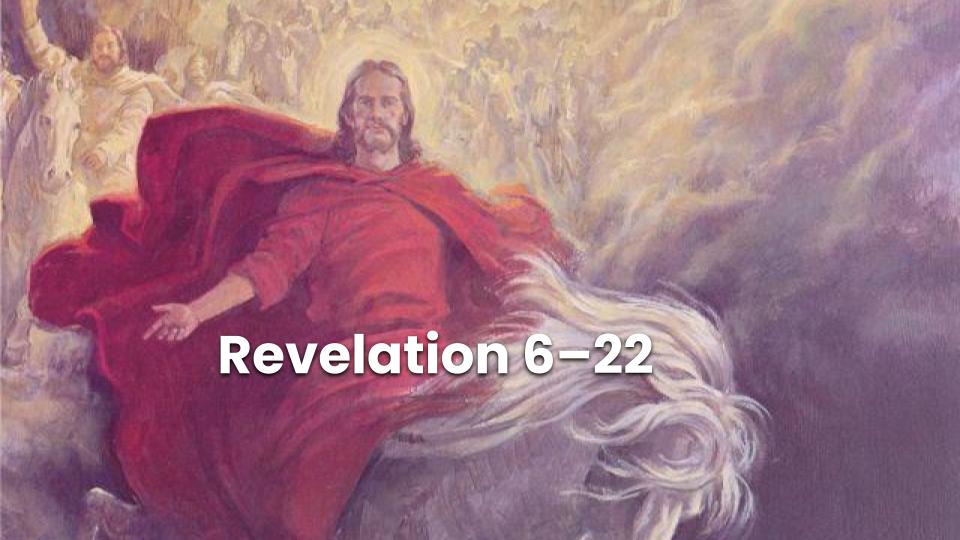Here are some ideas for learning and teaching a few of the great principles in Galatians. And while you’re here, I recommend you check out my free online course, “Seeking Jesus.”
Videos for Galatians
The seminary video on “The Law of the Harvest” (Galatians 6:7-9) is a little cheesy, but it’s still fun.
The Bible Project videos do a great job of helping us understand the big picture of Galatians. Watch it here.
Have young kids? Try this video on the fruits of the Spirit.
Ideas for Learning More About Galatians
***Paul and Peter’s Argument***
Here’s a story I never heard in Primary: Paul writes, “When Peter was come to Antioch, I withstood him to the face, because he was to be blamed.” (Galatians 2:11). What? A conflict between Peter and Paul? What’s this all about?
Here’s the short version. During the time of Christ, there were specific rules about who you could eat with–and one group many Jews wouldn’t want to eat with were Gentiles. But after Peter’s revelation that Gentiles could be baptized (see Acts 10), it seemed apparent that it was appropriate to eat with them.
However, this became a controversial topic among early Christians. When Peter traveled to Antioch, he originally ate with Gentiles, but stopped when Jews came to visit because he was apparently afraid of what they think (see Galatians 2:12). Paul was extremely concerned because “other Jews joined [Peter] in this hypocrisy, so that even Barnabas was led astray by their hypocrisy” (Galatians 2:13, NRSV).
Imagine a scenario something like this–you’re the star of the basketball team and you’ve been working hard to bring unity between the basketball players and volleyball players. You’ve made it so everyone eats together at lunch, including the captain of the basketball team. You feel great about this newfound harmony. But one day, some basketball players from another city come to the cafeteria–and they don’t eat with volleyball players. The basketball team captain doesn’t want to offend the basketball players from out of town, so he doesn’t eat with the volleyball players. Of course that really hurt the volleyball players feelings, especially when other basketball players joined the captain. The unity that you’ve worked hard to build is falling apart and you get pretty frustrated. In this analogy, Peter is the basketball team captain, the volleyball players are the gentiles, the basketball players from out-of-town are strict Jews, and you’re Paul.
Peter’s actions of not eating with the Gentiles were so upsetting to Paul that he “opposed [Peter] to his face” and told Peter, “If you, though a Jew, live like a Gentile and not like a Jew, how can you compel the Gentiles to live like Jews?” (Galatians 2:14, NRSV). Paul wanted to make sure that nobody was excluded.
I’ve talked with some people who are uncomfortable with this story. “Why would Apostles argue with each other?” They wonder. Dr. Gaye Strathearn writes, “This passage is a difficult one. Just as ancient Saints were not comfortable with the public tension between Christianity’s most prominent leaders, neither are modern Saints today.” And to be clear, we’re only getting one side of the story.
There aren’t any simple answers to “What’s going on in this story?” because there is a lot of complex background. I recommend reading Dr. Strathearn’s entire article on this subject. The short answer, to use Dr. Strathearn’s final paragraph is this: “The incident in Antioch is a reminder that history, even religious or sacred history, is rarely neat and straightforward. Even though the resurrected Jesus directed his Apostles to expand the missionary work to take the gospel to all the world, the early church clearly struggled to grasp and comprehend all of the implications of such a command. Paul’s account in Galatians 2 reminds us that leaders of the church, even after receiving revelation, must still wrestle with complex doctrinal issues. As Elder Bruce R. McConkie taught, even though Peter received a revelation and opened the door for missionary work among the Gentiles, “there would yet be difficult doctrinal, administrative, and procedural problems to be solved.”
Personally, I love messy stories in scripture. I hope we’ll take some time this week to wrestle with this one.
***Fruits of the Spirit, Jalapenos, and Grapes***
Almost every Come Follow Me discussion with Galatians is going to discuss “The fruits of the spirit” (Galatians 5:22-23). Here’s a fun object lesson you might share, coming from the book HOW? that I wrote with Anthony Sweat. How do you see this connecting with the fruits of the Spirit?

***Christian Liberty***
Paul viewed aspects of the Law of Moses as something that had once been necessary, but that Christians were now at liberty to leave behind. He writes, “Now before faith came, we were imprisoned and guarded under the law until faith would be revealed. Therefore, the law was our disciplinarian until Christ came so that we might be justified by faith. But now that faith has come, we are no longer subject to a disciplinarian, for in Christ Jesus you are all children of God through faith” (Galatians 3:23-26, NRSV).
Paul continued, writing to the Galatians, “Stand fast therefore in the liberty wherewith Christ hath made us free, and be not entangled again with the yoke of bondage” (Galatians 5:1). The liberty of which Paul wrote is sometimes referred to as “Christian liberty,” meaning that people did not have to labor under the Law of Moses or fences that had been put up around it (what Paul referred to as “the yoke of bondage,” (Galatians 5:1)). Paul used circumcision as a specific example of how the Law of Moses could be seen as bondage. Some Pharisees wanted Gentiles who converted to Christianity to be circumcised (see Acts 15:5). Paul wrote, “For in Jesus Christ neither circumcision availeth any thing, nor uncircumcision; but faith which worketh by love” (Galatians 5:7). In other words, because Christ had come, people were free from the requirement of circumcision. Thus, Paul further explained, “Ye have been called unto liberty…by love serve one another. For all the law is fulfilled in one word, even in this; Thou shalt love thy neighbour as thyself” (Galatians 5:13-14). Circumcision wasn’t as important as love.
Christian liberty doesn’t mean anything goes. After a discourse to the Galatians about whether or not they should obey specific rules, Paul taught, “Walk in the Spirit” (Galatians 5:16). Christian liberty doesn’t mean ignoring the commandments, rather it’s a call for serious saints to follow the Spirit. The Spirit will show us all the things that we should do (see 2 Nephi 32:5). The more we truly walk in the Spirit, the less we need external fence laws. Our goal is to be the people who God described: “I will put my law in their inward parts, and write it in their hearts; and will be their God, and they shall be my people” (Jeremiah 31:33).
Christian liberty goes hand in hand with fence laws and requires a lot of thought and nuance when studying, teaching and living. If you’re not familiar with fence laws, the Book of Galatians is a great time to study and ponder this concept. Learn more here.
***Galatians and Christ’s Crucifixion***
In his epistle to the Galatians, Paul uses crucifixion imagery to talk about sin. He writes, “Those who belong to Christ Jesus have crucified the flesh with its passions and desires” (Galatians 5:24 NRSV).
In this same epistle, Paul writes, “God forbid that I should glory, save in the cross of our Lord Jesus Christ” (Galatians 6:14). Christ’s Crucifixion was central to Paul! He also wrote, “I am crucified with Christ” (Galatians 2:20) and “They that are Christ’s have crucified the flesh with the affections and lusts” (Galatians 5:24).
At the conclusion of Galatians, says, “In the cross of our Lord Jesus Christ . . . the world is crucified unto me” (Galatians 6:14). Think about those words: The world is crucified unto me. It seems like Paul is encouraging us to avoid sin. So why doesn’t Paul just say “Turn away from the world?” Why does he instead use language like, “The world is crucified unto me”? and “Those who belong to Christ have crucified the flesh”?
Perhaps he’s using this imagery to intensify for us what it means to let go of our sins. When we think about Christ on Calvary, we can mentally nail our sins to his cross. In fact, as Elder D. Todd Christofferson taught, “If we are among the penitent, with His Atonement our sins are nailed to His cross.”
Is there a sin we need to nail to his cross today? How will we more fully accept and act on his sacrifice?
For more insights on Christ’s Crucifixion, visit this page.
***Additional Resources***
For a deeper dive into the conflict between Peter and Paul, see “Peter and Paul in Antioch,” by Dr. Gaye Strathearn.
***
I hope these resources are helpful to you in your learning and teaching this week!
Do you want more learning and teaching tips for Come Follow Me? Follow me on Instagram or sign up here for emails with insights on Come Follow Me.






